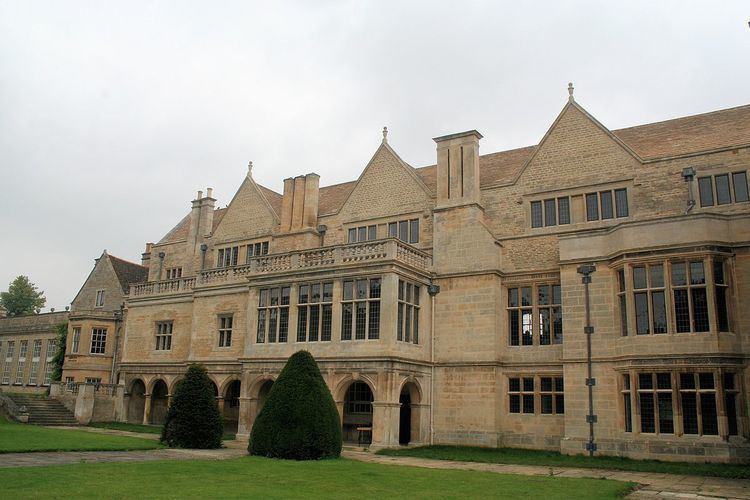Population 160 (2011) Sovereign state United Kingdom | OS grid reference TL023957 Post town PETERBOROUGH Local time Monday 10:55 AM Dialling code 01780 | |
 | ||
Weather 8°C, Wind S at 31 km/h, 85% Humidity | ||
Apethorpe hall
Apethorpe (pronounced "Ap-thorp") is a village and civil parish in East Northamptonshire district of the shire county of Northamptonshire, England. The 2001 census records a population of 130, increasing to 160 at the 2011 census. Apethorpe was recorded in the Domesday Book as Patorp. The village is compact, uniform and centred on Main Street. In the late 15th Century Apethorpe was acquired by Sir Guy Wolston, an officer in the household of Edward IV, who began the construction of the present Apethorpe Palace.
Contents
- Apethorpe hall
- Map of Apethorpe Peterborough UK
- Idbe site visit apethorpe hall march 2012 wmv
- Location
- Church
- Apethorpe Palace
- The Kings Head
- Other structures
- Roman villa
- Notable former residents
- References
Map of Apethorpe, Peterborough, UK
Idbe site visit apethorpe hall march 2012 wmv
Location
The village is approximately 6 miles (9.7 km) north of the Northamptonshire market town of Oundle, 12 miles (19.3 km) northeast of Corby, and 15 miles (24.1 km) west of Peterborough. The nearest railway stations are in Corby for London St Pancras and Peterborough for London King's Cross. London is about 75 miles (121 km) via the A1 road.
Church
St Leonard's Church, Apethorpe is mostly Perpendicular but has a chapel of 1621 and tower partly 1633. There is a huge monument to Sir Anthony Mildmay (d.11 September 1617) and another smaller one to Sir Richard Dalton (d.1442). Mildmay was the eldest son of Sir Walter Mildmay, an English statesman who served as Chancellor of the Exchequer of England under Queen Elizabeth I and also founded Emmanuel College, Cambridge. Sir Anthony inherited the family estate of Apethorpe and was knighted in 1596 when he was appointed ambassador to Henry IV of France.
Apethorpe Palace
The Willow Brook bounds the eastern edge of the village, which contains Apethorpe Palace formerly known as Apethorpe Hall q.v..
The King's Head
In 1904 Leonard Brassey made many alterations to the village, a number of cottages were built and the old Westmorland Arms was replaced by a new public house, The King's Head.
Other structures
There is a stocks and whipping post just west of the church. An agent's House south of the church and the Dovecote north of the Hall are both 17th century. Pevsner also mentioned Blue Field Farm 0.5 miles (1 km) northeast as having an interesting barn with a cross-cartway through it.
Roman villa
The remains of the villa lie in the Hall grounds about 500 yards (450m) southeast of the Hall and were excavated in 1859. A courtyard of ca.230 by 240 feet contained the main buildings. The main block on the north side had hypocausts and fine geometric mosaics with two other wings and a bath block. Slate from Collyweston was used for the roofs. Pottery found included terra sigillata and Castor ware. Coins located the main period of use as the 4th century AD. There was a well in the centre of the courtyard. Two small un-inscribed house-altars were found. One coin of Septimius Severus, the remainder Constantinian (?), possibly indicating the date of the main phase of the villa. In successive phases of building there appears to have been at least one aisled building in the same position relative to a winged corridor house at Ickleton. The villa combines a dwelling house with an aisled house.
Notable former residents
The village was home to the actor Rowan Atkinson, known for his roles in Mr. Bean and the Blackadder series.
